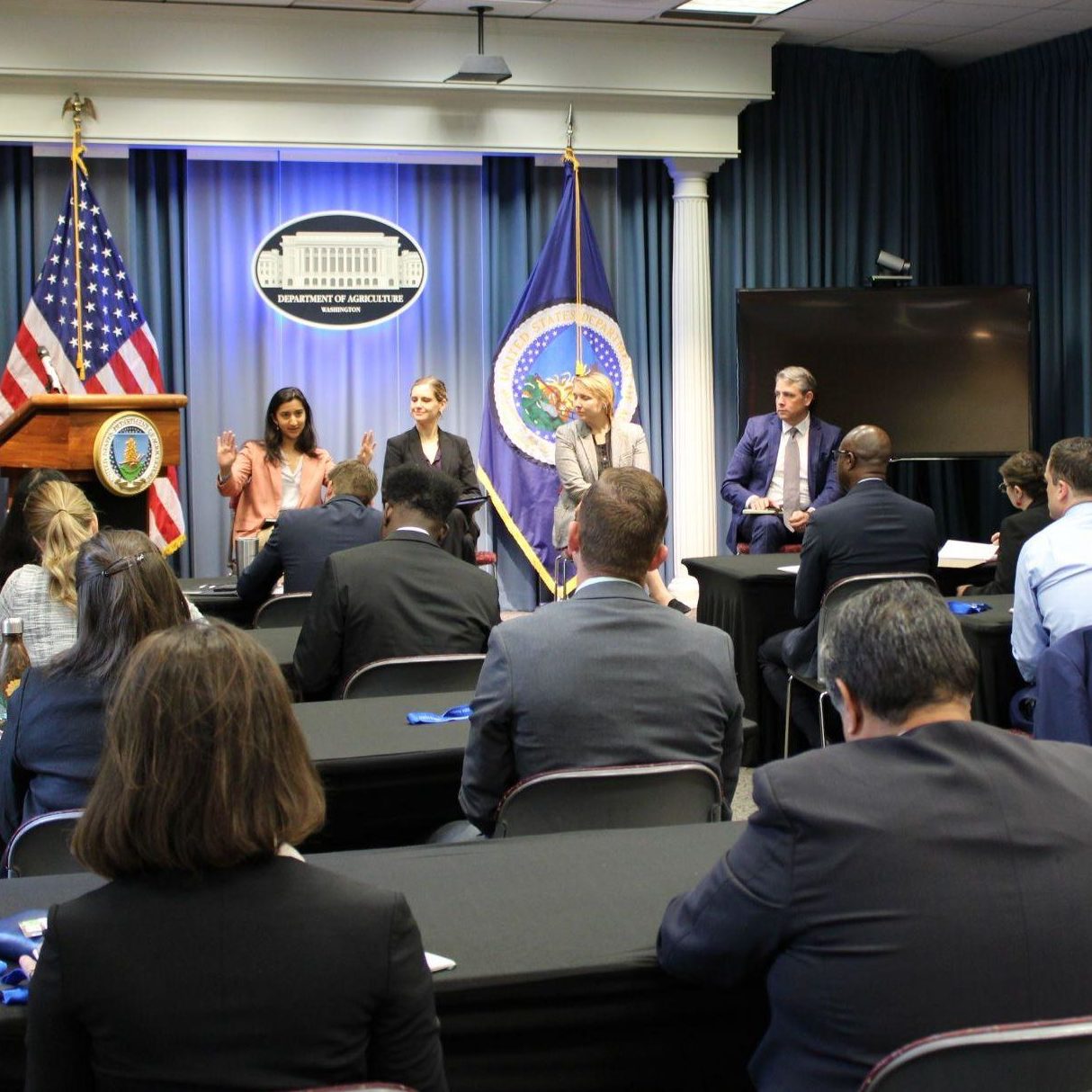
By Connor Kaeb, ASU Sustainable Food Systems graduate student.
Recently, the Sustainable Food Systems graduate cohort from Arizona State University spent a week in Washington, DC, meeting with policy leaders and influencers in our nation’s capital. As part of this immersive experience, we had the opportunity to meet with leaders from the United States Department of Agriculture (USDA) Farm Production and Conservation (FPAC) mission area.
Representing the mission area were Tim Gannon, Chief of Staff, FPAC; Meg Campbell, Senior Advisor, Natural Resources Conservation Service (NRCS); Toby Cain, Chief of Staff, Risk Management Agency (RMA); and Riya Mehta, Chief of Staff, Farm Service Agency (FSA).
The FPAC mission area covers the USDA agencies that are the most public-facing in nature, with field offices all across the country. Because the agencies work directly with producers, they have been on the front line in getting the record conservation funding that was included in the Inflation Reduction Act (IRA) out to farmers. The panel spoke of the challenges that come with that, but also the great opportunities that have come from it. For example, FSA is able to utilize farm loans to help farmers who were delinquent and those who were struggling to repay their loans in order to help prevent farm defaults as a result of turmoil caused by the COVID-19 pandemic and other global disruptions.
The agencies are also striving to drive innovation. USDA has launched the Partnership for Climate-Smart Commodities program, directing funding at projects across the country that seek to decrease greenhouse gas emissions from agriculture while driving benefits to the producer. A dashboard that allows the public to filter the projects by state, commodity, or conservation practice can be found here.
Another area of innovation is found in USDA’s aptly named Office of Urban Agriculture and Innovative Production. That office is responsible for the People’s Garden Initiative, which was recently renewed by USDA. The initiative features a garden at the USDA’s headquarters in Washington, DC. In addition, it also includes 17 other gardens in major cities across the United States. These gardens serve as a model for other urban gardens, demonstrating best practices for sustainable production in an urban setting. Other school and community gardens or urban agriculture operations can now gain the designation of a “People’s Garden” if they meet criteria such as being collaborative and including an education component.
The Office of Urban Agriculture and Innovative Production is also working collaboratively with FSA to stand up 17 urban county committees to ensure that FSA services and programs are working for the nation’s urban farmers. Urban Agriculture and Innovative Production grants pave the way for urban farms and gardens. The Office also administers Composting and Food Waste Reduction Cooperative Agreements with local governments.
The FPAC mission area at USDA is working hard to drive innovation and assist farmers with conservation programs. We greatly appreciate the FPAC staff members for taking the time to share their expertise and experiences with our group, and we all left with a great appreciation for the work that is being done and the outcomes that can be achieved.
This blog is part of a series from the May 2023 Washington D.C. Immersive component of the Swette Center graduate programs. Students met with federal food and agriculture focused officials at USDA, the White House, and Congress alongside many other important influencers of policy in industry and non-profits.
